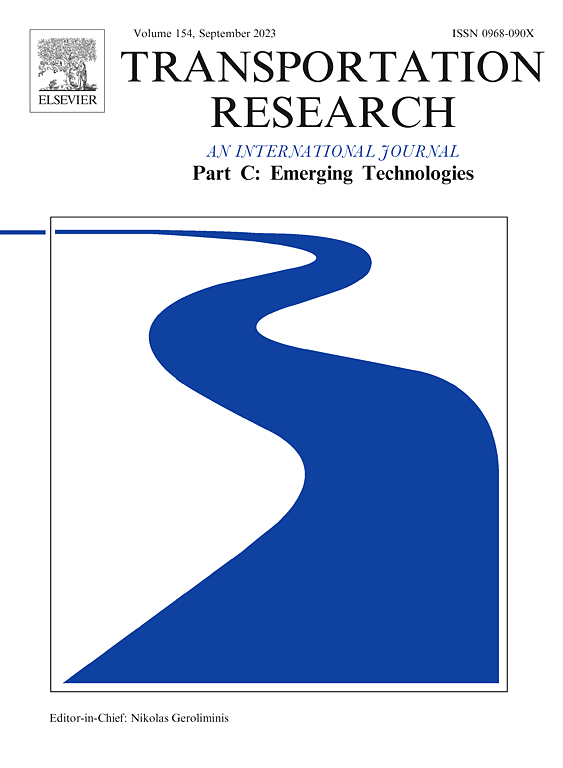Optimal road facility spare parts location with continuum approximation
IF 7.6
1区 工程技术
Q1 TRANSPORTATION SCIENCE & TECHNOLOGY
Transportation Research Part C-Emerging Technologies
Pub Date : 2025-03-27
DOI:10.1016/j.trc.2025.105109
引用次数: 0
Abstract
This study presents a new methodology for optimizing the location of spare parts depots for expressway facilities using a continuum approximation (CA) approach. The increasing importance of expressway facility asset management necessitates efficient strategies for minimizing both user impact during failures and the costs of maintaining spare parts depots. In this study, we first formulate a model within the framework of dynamic facility location planning (DFLP), a type of integer programming (IP), to optimize the spare parts location plan, taking into account the failure processes of expressway facilities. Traditional IP models are computationally intensive when applied to large-scale networks. To address this, we adapt the CA approach, traditionally used for facility location problems in Euclidean spaces, to handle network distances by embedding the road network into a new Euclidean space using the Isomap algorithm. The proposed methodology was then applied to spare parts location optimization problems of electronic toll collection (ETC) systems in a real-world expressway network in Japan. The results demonstrate that the proposed methodology significantly reduced the optimization computation time by 85.6% to 97.9% compared with an existing method, showcasing a substantial improvement in computational efficiency while also obtaining near-optimal solutions.
求助全文
约1分钟内获得全文
求助全文
来源期刊
CiteScore
15.80
自引率
12.00%
发文量
332
审稿时长
64 days
期刊介绍:
Transportation Research: Part C (TR_C) is dedicated to showcasing high-quality, scholarly research that delves into the development, applications, and implications of transportation systems and emerging technologies. Our focus lies not solely on individual technologies, but rather on their broader implications for the planning, design, operation, control, maintenance, and rehabilitation of transportation systems, services, and components. In essence, the intellectual core of the journal revolves around the transportation aspect rather than the technology itself. We actively encourage the integration of quantitative methods from diverse fields such as operations research, control systems, complex networks, computer science, and artificial intelligence. Join us in exploring the intersection of transportation systems and emerging technologies to drive innovation and progress in the field.

 求助内容:
求助内容: 应助结果提醒方式:
应助结果提醒方式:


